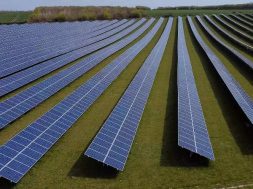GCL-pOLY Announces Breakthroughs in Deveolpment of FBR Process for Prdouction of Grangular Polysilicon
Chinese polysilicon supplier GCL-Poly announced in early March that it has made significant breakthroughs in the development of its FBR process. GCL-Poly has built a production line specifically for the manufacturing of granular polysilicon.
It has a production capacity of 10,000MT, and the quality of its granular polysilicon has been verified by clients in the downstream section of the supply chain. GCL-Poly said there are notable improvements in the key indicators of the quality standard.
In the aspect of production, the Siemens process has long been the mainstream technology, whereas the FBR process has been a contending but immature technology.
GCL-Poly said that its FBR process now matches the Siemens process in terms of the quality of the silicon dense material. Furthermore, the former actually surpasses the latter in a few indicators.
The company has done long-term R&D on auxiliary materials, including the liner material for the inner wall of the reactor. Subsequently, it is able to keep costs down while raising product quality.
In particular, the amount of contaminants has been significantly reduced. At the current stage of development, the total metal content is under 10ppbw, the carbon content is under 0.4ppma, and the hydrogen content is under 20ppma.
The hydrogen content in the output of the 10,000MT production line is nearly 30% less when compared with another 6,000MT production line that was built by GCL-Poly at an earlier time. Additionally, the fine powder rate has been lowered to under 0.1%.
In terms of yield rate, GCL-Poly said that its FBR process has reached 99% for granular polysilicon in general and 90% for the granular polysilicon that can be used to make mono-Si products. Yield rate has been a bottleneck in the development of the FBR process.
Compared with the Siemens process, the FBR process consumes less electricity. However, this advantage is canceled out by the high share of fine silicon powder in the output. This dust basically has no value.
The polysilicon granules made with GCL-Poly’s FBR process are spherical in shape and have a diameter of around 2mm.
They not only meet the material specification requirements for mono-Si products but are also more compatible with an automated feeding system (i.e., easy loading and transportation).
Furthermore, setting up a production line based on this technology requires an investment of no more than RMB 700 million, and the electricity consumption of the production line during operation does not exceed 20kWh/kg.
All in all, GCL-Poly is asserting that the granular polysilicon from its FBR process is a suitable raw material for the “smart” manufacturing of mono-Si products.
GCL-Poly now plans to further scale up production as its clients have confirmed that the amount of contaminants in the output has been lowered to an acceptable level.
The hydrogen content has been reduced substantially since the initial phase of development for the technology, and this issue will be further addressed in the setup of a new 30,000MT production line in the near future. Also, GCL-Poly has been working with its clients to improve the doping ratio and processing efficiency of its granular polysilicon.
Although there is still a lot of room for optimization in the development of the FBR process, GCL-Poly expects its technology will soon be ready for industrial applications and see greater use in the downstream part of the supply chain.
GCL-Poly acquired the assets and technology related to the FBR process from SunEdison in 2016. Hence, the company has committed a considerable amount of time and resources to advance this method of polysilicon production.
It remains to be seen whether the FBR process will fulfill its original promise of being a viable solution for manufacturing polysilicon that is both high in purity and low in cost.
















